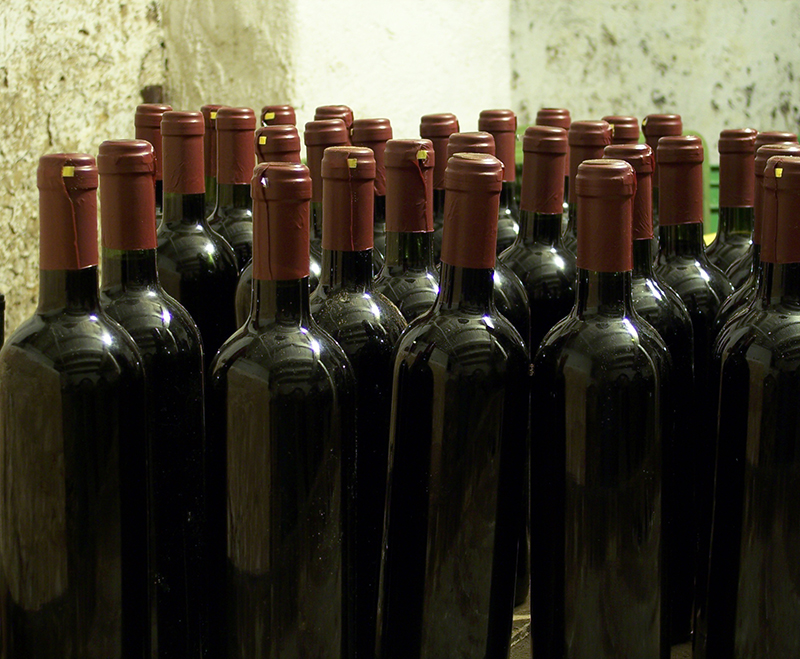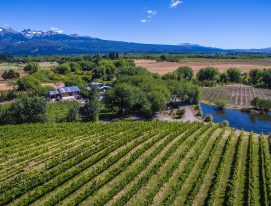We all know that Argentina is the world’s leading producer of Malbec. However, a lot of other red varieties are grown in the country whose quality makes them well worth learning about too.
With a red-loving population and the ideal natural conditions for darker-hued wines, red wines from Argentina are a sure thing whether it be Cabernet Sauvignon, Cabernet Franc, Syrah, Bonarda or, of course, Malbec.
But it’s also a good idea to take a look at other varieties that aren’t so widely grown but that are used to make exceptionally interesting wines such as Petit Verdot, Tannat, Tempranillo and Merlot, as well as even more exotic grapes such as Garnacha, which many Argentine winemakers are very excited about.
And of course there are also superb combinations of red wines from Argentina, principally Bourdeaux Blends.

Why are red wines from Argentina so good?
More than half of the vineyards planted in Argentina are red varieties and the main explanation for this is that the country’s different terroirs suit them so well making it a leading producer of red wines.
As you know, 90% of the vineyards are located in the Andean Foothills where the climate is dry and the altitude ranges from 2300 to 10,000 feet above sea level.
This ensures excellent levels of sunlight, which helps the grapes to ripen and produce good concentrations of pigment and polyphenols, meaning that varieties with both long and short cycles are guaranteed to achieve the right point of ripeness.
The altitude, meanwhile, results in a significant thermal range – the difference in temperature between day and night – so that during the ripening period the days are warm but the nights cool. This allows for greater concentration of aromas and natural acidity, which is generally described as freshness.
Because of these two factors, red grapes tend to ripen healthily, preserving their character and balancing all the different ingredients needed to produce quality wines with good aging potential.
This is how red wines from Argentina obtain their rich, vivid color, piercing fruity aromas and expansive, juicy palates with ripe tannins: the basis for a whole range of different styles.

So, which to try? Malbec is the most obvious choice of course but below we suggest a few more:
Argentine Bordeaux Blends. Like all the new world wine producers, Argentina was initially heavily influenced by European countries and the industry began with the cultivation of French varieties. Winemakers were also very familiar with Bordelais wines but of course regional conditions meant they developed their own local assemblages made from more or less equal parts Cabernet Sauvignon, Malbec and Merlot.
Over the years, Merlot declined in popularity, or rather Cabernet Franc and other varieties were preferred as winemakers honed their skills with each blend. For most wineries, this kind of blend is employed for the house’s flagship wine, which are usually made with an eye on tradition and substance, delivering good body and structure and excellent aging potential.
Argentine Cabernet Sauvignon. Without a doubt, the varietals made with the king of red grapes are some of the hidden gems of the vineyards of the Andes. Many oenologists even think that in the future it will challenge Malbec as the country’s foremost wine.
In high altitude vineyards, this slow maturing grape can ripen elegantly thanks to the good sunlight, warm days and cold nights that one gets up on the mountainside, thus preserving their freshness and character. Every region has its own style, from the Uco Valley in Mendoza where one gets fruity, rich wines with vibrant palates, to the Calchaquí Valleys where one finds vigorous, spicy, and herbal incarnations.
Cabernet Franc. The trendiest grape around these days, Franc has adapted extraordinarily well to the land of Malbec and its high altitude vineyards, producing free-flowing wines with lovely juice in the mouth and fresh, elegant character. As a varietal, it is surprisingly fresh and expressive while in blends, especially with Malbec, it brings tension and plenty of depth.
Bonarda, a local specialty. This red grape is the second most widely planted variety after Malbec and is a favorite of local palates. Although it’s also used in many blends, as a varietal it delivers great juice and flavor. This is the ideal grape for lovers of Malbec as it has a similarly easygoing profile with good body and freshness.
Andean-Mediterranean blends. A seemingly unlikely style for Argentina, thanks to the quality of Syrah and Garnacha being produced in the country, some exquisite wines appearing in this category with a cluster of producers surprising experts with their varietals and sophisticated GSM (Grenache, Syrah and Mourvedre) blends.
Of course, the list could go on and on; there are several red wines from Argentina which are genuine classics of the Argentine viticultural scene, but we’ll get around to them, and many more, soon enough.



